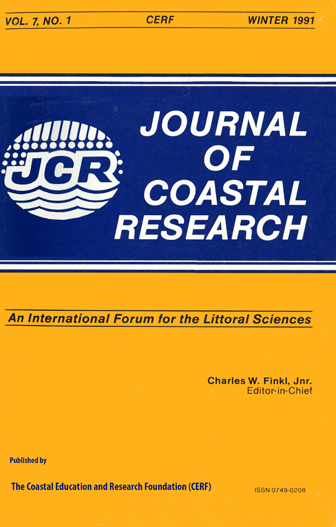Radioactivity of Heavy Mineral Sands as an Indicator of Coastal Sand Transport Processes
Keywords:
Barrier beaches, sediment transport, heavy minerals, sediment tracers, sediment dynamics, radioactivityAbstract
Heavy mineral-rich beach sands, concentrated by wave and wind action, have been found to contain significant gamma radioactivity, due primarily to trace amounts of uranium and thorium found in monazite and zircon. Concentrations of heavy minerals are found in beach berms and coastal dunes on the barrier islands ringing Apalachicola Bay in northwest Florida. The heavy mineral sands are detrital products of southern Appalachian crystalline rocks, transported to the Gulf of Mexico by the Apalachicola River. Field measurement of gross gamma radiation indicates that heavy mineral sand deposits within the shore zone are highly mobile, with observed radioactivity fluctuating by an order of magnitude within months. By combining field measurements with laboratory heavy mineral analysis and gamma spectrometry, bulk volume of heavy mineral-containing sand within a given area can be estimated. Changes in measured radioactivity as a function of time and position can be used to describe sand redistribution patterns. The resultant estimate of sand transport is obtained rapidly and easily relative to existing methods.


